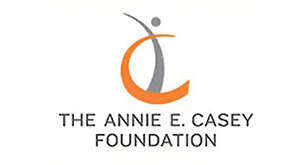Courts make various decisions affecting children, including placement and custody determinations, safety and permanency planning, and proceedings for the termination of parental rights. Whenever a court makes such a determination, judges must weigh whether the decision will be in the … Read More
Safety Permanency & Wellbeing

FAMILY TIES
Analysis From a State-By-State Survey of Kinship Care Policies UNDERSTANDING KINSHIP CARE Kinship care is a critical resource for children and youth who come to the attention of the child welfare system. Kin caregiving has grown significantly over the past … Read More

Play for All Ages: Designing Intergenerational Spaces That Build Connections and Encourage Learning
This webinar featured presentations by Dr. Kathy Hirsh-Pasek, Professor of Psychology at Temple University and a senior fellow at the Brookings Institute, and Stephanie Firestone, Senior Strategic Policy Advisor with AARP International.

Webinar Discusses the 4 Cs of Workforce Development: Culture, Competency, Capacity, & Community
The National Child Welfare Workforce Institute hosted the webinar “4 Cs of Workforce Development: Culture, Competency, Capacity, & Community” this past September as part of the 2023 Workforce Development Month. It featured the Child Welfare League of America’s (CWLA’s) Emerging Leaders Committee, … Read More

Child Abuse Prevention Month Outreach Toolkit 2024
National Child Abuse Prevention Month: April 2024 Whether by proclamation, through social media, with graphics, or through other means, spreading the word about child abuse prevention lets your community know they can take action to strengthen families and help them … Read More

Spotlight On Youth Mentoring
WHAT IS MENTORING AND WHY DOES IT MATTER? Mentoring involves a supportive, caring relationship between an adult and a young person, either established formally through a program or occurring naturally such as with a neighbor or coach. Formal mentoring relationships may be offered through … Read More

Where We Stand: A 20-Year Retrospective Of The Unaccompanied Children’s Program In The United States
EXECUTIVE SUMMARY Where We Stand: A 20-Year Retrospective of the Unaccompanied Children’s Program in the United States reviews the Unaccompanied Children’s Program from the passage of the Homeland Security Act (HSA) of 2002 until today. It assesses 20 years of … Read More

Survivor-Informed Services Among Runaway and Homeless Youth Programs
Human trafficking survivors, of all ages, are the experts of their own experiences. Their experiences can provide a powerful insight on how youth-serving organizations can integrate survivor-informed practices to enlighten services, interventions, as well as decisions impacting young people, especially … Read More

The Influence Of Early-life Adversity On The Coupling of Structural and Functional Brain Connectivity Across Childhood
Exposure to early-life adversity (ELA) is a risk factor for behavioral and emotional problems in childhood as well as long-term health consequences. Neuroimaging studies provide a wealth of evidence for the association of perinatal adversity with neurodevelopmental outcomes. These findings … Read More

Latino Grandfamilies: Helping Latino Children Thrive Through Connection To Culture And Family
Toolkit Introduction About 2.7 million children live in grandfamilies or kinship care, families in which children are being raised by grandparents, other extended family members, and adults with whom they have a close family-like relationship such as godparents. According to … Read More

